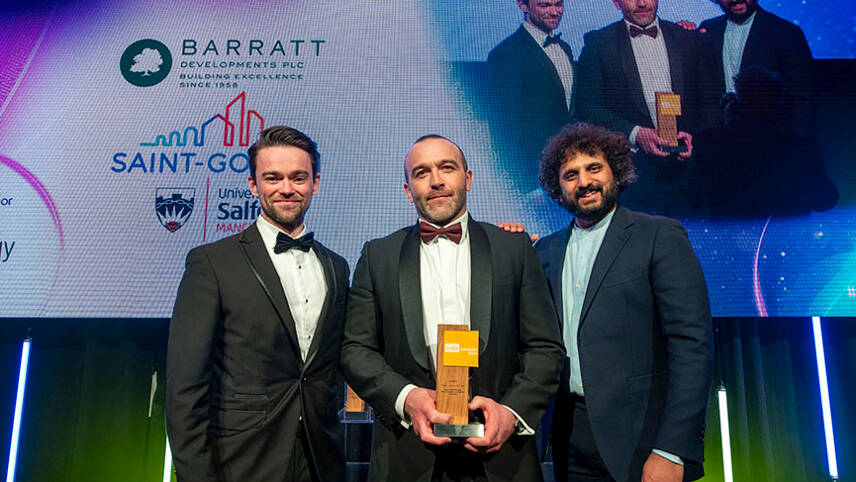This premium content is exclusive to edie Members.
To find out more about edie Membership, please click below.
If you are an existing member, login here

At a glance:
Who: Housebuilder Barratt, materials manufacturer Saint-Gobain and The University of Salford
What: The largest research facility of its type, designed to test building resilience to climate change
Where: The University of Salford, Greater Manchester
When: A nine-month trial which began January 2023
Why: To provide a ‘blueprint’ for resilient, efficient, low-carbon homes of the future
The Challenge:
The UK’s Climate Change Committee (CCC) has repeatedly pointed to the built environment as an area in which emissions reductions have been lagging. More attention has been given to poor energy and water efficiency in UK homes during the cost-of-living crisis, making this a socioeconomic challenge as well as a climate issue.
A new ‘Future Homes Standard’ will launch in 2025, putting new requirements on housebuilders to reduce the operational impacts of homes. But in implementing them, these firms must balance other factors including affordability and climate adaptation. This will invariably require innovations in materials and processes.
The Solution:
A full-sized home, built using modern methods of construction using low-carbon materials and enhanced insulation, located within the Energy House 2.0 test chamber at the University of Salford. The test chamber allows for testing of weather conditions between -20C and 40C, plus simulation of wind, rain, snow and solar radiation. In this way, the building’s energy performance can be tested in a range of weathers which mimics 95% of the global populated area.
How it works:
Barratt and Saint-Gobain collaborated to erect an energy-efficient house with a low embodied carbon footprint within the Energy Home 2.0 test chamber.
Called ehome2, the building’s timber frame was erected using modern methods of construction and was then overlayed with timber panels and ‘brick slips’. These innovative building materials look like traditional bricks but are lighter and thinner, cutting costs and carbon. A fabric-first approach to energy efficiency was taken to maximise energy efficiency.
Additionally, eHome2 was kitted out with an air-source heat pump and rooftop solar panels, plus a smart home control system to maximise the efficiency of these technologies. Water efficiency measures were also built in.
Almost 100 sensors were fitted to the home during the nine-month testing period, assessing its performance across a range of weather and temperature conditions. These same tests would have taken years in a real-world external environment due to the need to wait for the right environmental conditions.
The results:
It was found that energy bills for eHome2, which is fully electric, would cost £85 per month, compared with £315 per month for a typical Victorian house in Britain with gas and electricity connections.
Should occupants of the home choose renewable energy tariffs to meet the needs of any electricity not generated by the onsite solar, the house will reach zero power-related emissions.
Further specific figures have not yet been released, but Barratt and its project partners are touting significant reductions in embodied carbon – a key focus of the UK Green Building Council’s industry advice on the net-zero transition.
eHome2 was also cheaper and quicker to deliver than homes built using traditional materials and construction methods, due to material efficiencies and innovations plus process innovations. Adoption of this approach more widely could help to ease staffing worries and supply chain crunches.
The project also captured hearts and minds. eHome2 attracted more than 3,000 visitors, including school pupils, and received more than 1,000 pieces of media coverage with a global reach.
The Judges said:
“ehome 2 is a great example of the collaboration and innovation required to decarbonise our housing stock. The ability to test different approaches and materials in a full-scale house will accelerate the development of a net-zero-capable supply chain and changes to processes for our housebuilding sector.”
© Faversham House Ltd 2024 edie news articles may be copied or forwarded for individual use only. No other reproduction or distribution is permitted without prior written consent.

